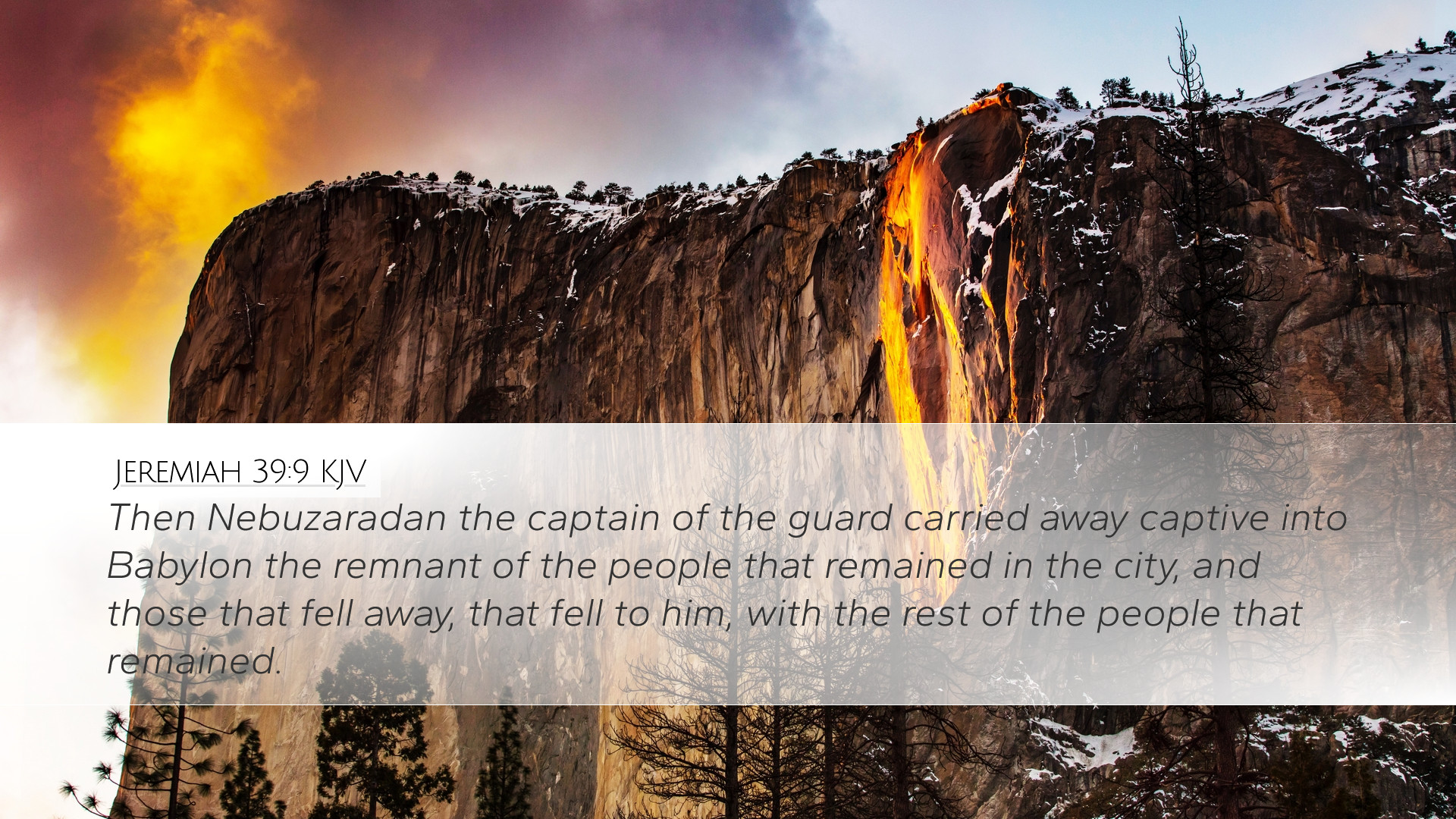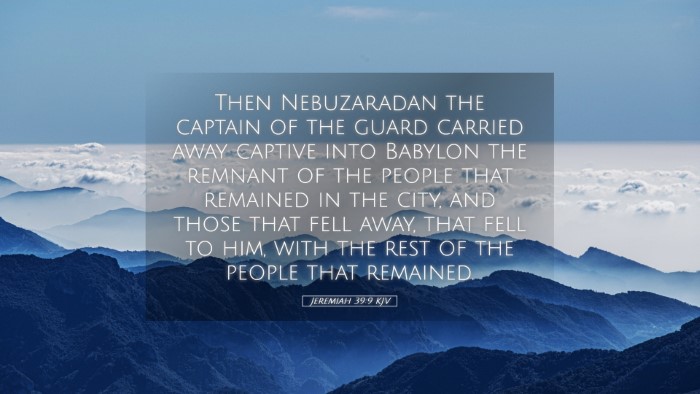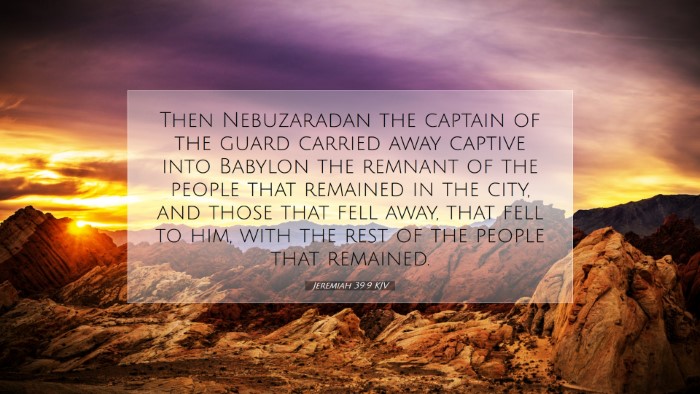Commentary on Jeremiah 39:9
Jeremiah 39:9 states: "Then Nebuzaradan, the captain of the guard, carried away captive the rest of the people that remained in the city, and those that fell away, that fell to the king of Babylon, and the rest of the multitude."
Contextual Overview
This verse is situated within the tragic narrative of the fall of Jerusalem in 586 B.C. The destruction of the city and the temple not only signified the end of Judaic sovereignty but also conveyed profound theological implications concerning divine judgment and human disobedience.
Historical Background
To understand the significance of Jeremiah 39:9, we must first consider the historical context. The Babylonian siege of Jerusalem culminated in a series of events prophesied by Jeremiah. The Babylonian forces, led by Nebuchadnezzar, besieged the city, leading to an eventual breach and the capture of its inhabitants.
- Nebuzaradan: The captain of Nebuchadnezzar’s guard, whose actions fulfill the prophecies concerning Jerusalem's destruction.
- The Captives: This verse highlights the fate of those remaining in the city, indicating a selective captivity that involved both the unresisting populace and those who had defected to the Babylonian side.
Theological Implications
This passage emphasizes several core themes which are essential for understanding the text:
- Divine Sovereignty: The capture of Jerusalem and its people serves as a profound reminder of God’s sovereignty in the administration of justice and judgment.
- Human Disobedience: The suffering of the people is attributed to their continued disobedience to God’s law, as warned by the prophets.
- Restoration and Hope: Despite the dire circumstances, later revelations foresee the restoration of God's people, demonstrating both justice and mercy in the overarching narrative.
Commentary Insights
Matthew Henry's Commentary
Matthew Henry notes the thoroughness of Nebuzaradan’s conquest: “Those that remained in the city, even the most significant persons who could do the greater service to the state, were taken away.” Henry highlights that the fall of Jerusalem was not merely a physical devastation but a spiritual desolation as well, emphasizing God’s hand in allowing the Babylonian triumph as a discipline against His wayward people.
Albert Barnes' Notes on the Bible
Barnes provides an analytical perspective, stating: “Those who defected to the king of Babylon had made a choice in light of imminent defeat, demonstrating a relinquishing of hope in the city’s future.” He highlights the duality of the captives' identities—some were loyal citizens while others had surrendered, symbolizing the multifaceted nature of faithfulness and betrayal within the covenant community.
Adam Clarke's Commentary
Clarke takes a more pastoral approach, saying: “This narrative serves as a powerful parable of the consequences of hard-heartedness against divine warnings.” He stresses that the remnants of population taken away serve as a solemn reminder that obstinacy in sin leads one away from fulfillment and blessing.
Lessons for Today
As we contemplate Jeremiah 39:9, several pertinent lessons emerge for modern readers:
- The Cost of Disobedience: Just as Jerusalem faced judgment, contemporary believers must recognize the seriousness of disobedience to God's commands.
- Hope amid Despair: This was not the end of God’s people; similarly, every believer is reminded that even in dire circumstances, God has a plan for restoration and hope.
- Call to Faithfulness: The duality of captives challenges individuals and churches to stay faithful despite circumstances that may tempt betrayal.
Conclusion
Jeremiah 39:9 serves as both an historical account and a profound theological statement on the nature of sin, judgment, and the unyielding sovereignty of God. Through the insights provided by notable commentators, pastors, theologians, and scholars can appreciate the depth of this passage and the exhortations it offers to today’s believers. By understanding the complexities of this text, one can apply its lessons in a meaningful way to the contemporary life of faith.


